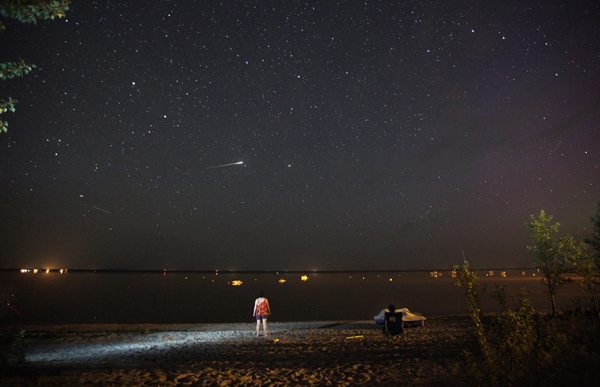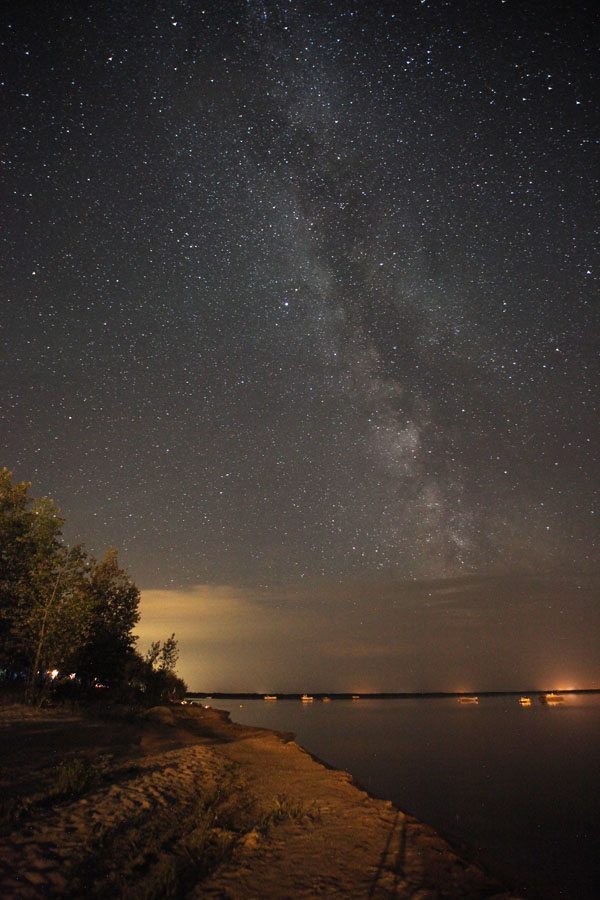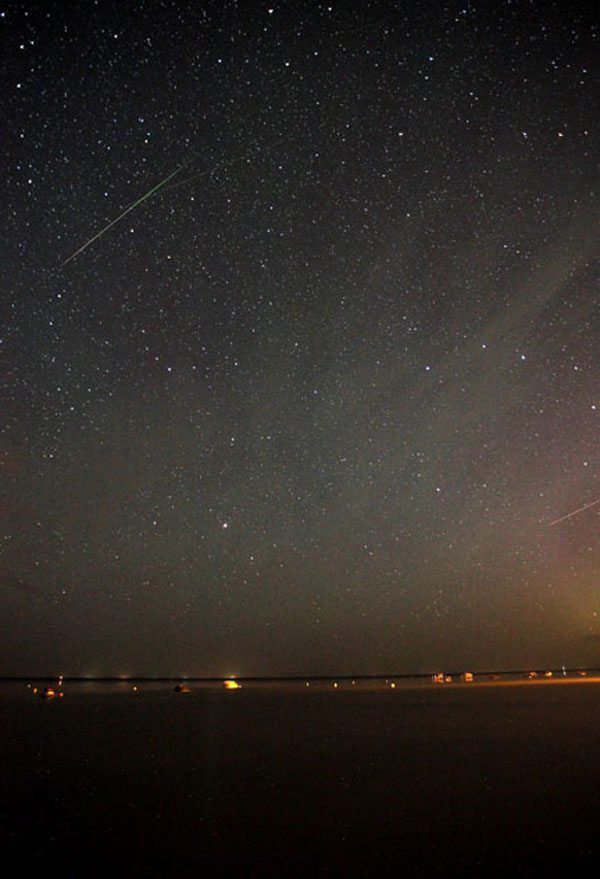Good Spirit Lake, near Yorkton, Sask., showed off the Perseid meteor shower well on a moonless August 12 night. The Perseid space debris cloud follows the orbit of the Swift–Tuttle comet, peaking annually on Earth in the middle of August. As many as 70 shooting stars per hour can be seen on these nights in the Northern Hemisphere. People turned out around the lake to view the night’s show. | Michael Raine photo
 Good Spirit Lake, near Yorkton, Sask., showed off the Perseid meteor shower well on a moonless August 12 night. The Perseid space debris cloud follows the orbit of the Swift–Tuttle comet, peaking annually on Earth in the middle of August. As many as 70 shooting stars per hour can be seen on these nights in the Northern Hemisphere. People turned out around the lake to view the night’s show. | Michael Raine photo
Good Spirit Lake, near Yorkton, Sask., showed off the Perseid meteor shower well on a moonless August 12 night. The Perseid space debris cloud follows the orbit of the Swift–Tuttle comet, peaking annually on Earth in the middle of August. As many as 70 shooting stars per hour can be seen on these nights in the Northern Hemisphere. People turned out around the lake to view the night’s show. | Michael Raine photo Good Spirit Lake, near Yorkton, Sask., showed off the Perseid meteor shower well on a moonless August 12 night. This photo fails to provide any meteors, however does provide a view of the Milky Way. The Perseid space debris cloud follows the orbit of the Swift–Tuttle comet, peaking annually on Earth in the middle of August. As many as 70 shooting stars per hour can be seen on these nights in the Northern Hemisphere. People turned out around the lake to view the night’s show. | Michael Raine photo
Good Spirit Lake, near Yorkton, Sask., showed off the Perseid meteor shower well on a moonless August 12 night. This photo fails to provide any meteors, however does provide a view of the Milky Way. The Perseid space debris cloud follows the orbit of the Swift–Tuttle comet, peaking annually on Earth in the middle of August. As many as 70 shooting stars per hour can be seen on these nights in the Northern Hemisphere. People turned out around the lake to view the night’s show. | Michael Raine photo Good Spirit Lake, near Yorkton, Sask., showed off the Perseid meteor shower well on a moonless August 12 night. The Perseid space debris cloud follows the orbit of the Swift–Tuttle comet, peaking annually on Earth in the middle of August. As many as 70 shooting stars per hour can be seen on these nights in the Northern Hemisphere. People turned out around the lake to view the night’s show. | Michael Raine photo
Good Spirit Lake, near Yorkton, Sask., showed off the Perseid meteor shower well on a moonless August 12 night. The Perseid space debris cloud follows the orbit of the Swift–Tuttle comet, peaking annually on Earth in the middle of August. As many as 70 shooting stars per hour can be seen on these nights in the Northern Hemisphere. People turned out around the lake to view the night’s show. | Michael Raine photo
 Good Spirit Lake, near Yorkton, Sask., showed off the Perseid meteor shower well on a moonless August 12 night. The Perseid space debris cloud follows the orbit of the Swift–Tuttle comet, peaking annually on Earth in the middle of August. As many as 70 shooting stars per hour can be seen on these nights in the Northern Hemisphere. People turned out around the lake to view the night’s show. | Michael Raine photo
Good Spirit Lake, near Yorkton, Sask., showed off the Perseid meteor shower well on a moonless August 12 night. The Perseid space debris cloud follows the orbit of the Swift–Tuttle comet, peaking annually on Earth in the middle of August. As many as 70 shooting stars per hour can be seen on these nights in the Northern Hemisphere. People turned out around the lake to view the night’s show. | Michael Raine photo Good Spirit Lake, near Yorkton, Sask., showed off the Perseid meteor shower well on a moonless August 12 night. The Perseid space debris cloud follows the orbit of the Swift–Tuttle comet, peaking annually on Earth in the middle of August. As many as 70 shooting stars per hour can be seen on these nights in the Northern Hemisphere. People turned out around the lake to view the night’s show. | Michael Raine photo
Good Spirit Lake, near Yorkton, Sask., showed off the Perseid meteor shower well on a moonless August 12 night. The Perseid space debris cloud follows the orbit of the Swift–Tuttle comet, peaking annually on Earth in the middle of August. As many as 70 shooting stars per hour can be seen on these nights in the Northern Hemisphere. People turned out around the lake to view the night’s show. | Michael Raine photo
Breaking ag news stories and commodities markets snapshots delivered daily right to your inbox!




















